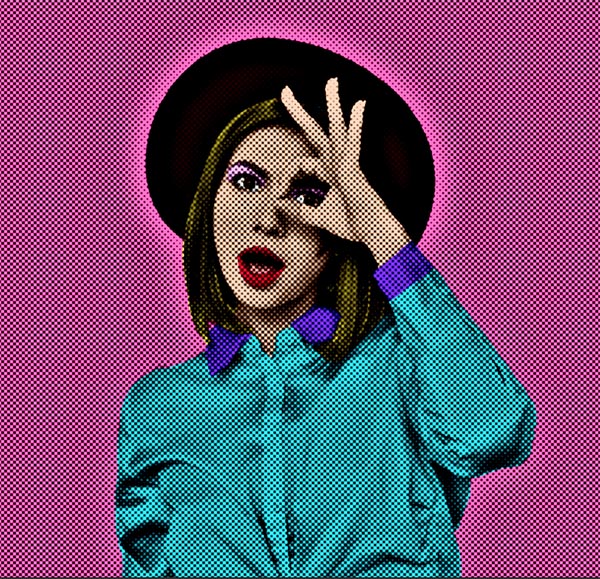

Neo Dadaism in Pop art focused on the use of found or known objects in artwork. He described the elements of Pop art as popular, young, expendable, transient, low-cost, mass-produced, sexy, witty, gimmicky, glamorous, and big business. The elements of Pop art were described in 1957 by Richard Hamilton, one of the founders of the movement. However, Pop art often uses mixed media and can also be observed in the sculptures of artists like Claes Oldenberg or Jeff Koons. Andy Warhol’s screenprints of Marilyn Munroe or the Cambel Soup Cans are some of the most recognizable examples of Pop art. Pop art takes influences from a wide variety of styles and is not united by a single technique. Pop Art parodies and democratizes art to make it part of every day, available and accessible to everyone. The use of repetition and mass production subverts the narrative that art should be rare or exclusive.

Instead of trying to be unique, pop artists embraced mass-production and elements from popular culture.Īrtworks in the Pop art style often employ commercial techniques such as silk screening to produce multiple replicas of artwork. Part of what makes Pop art unique is that it rejects the notion of uniqueness.

It started a trend, now seen in many contemporary artworks, of using artwork to comment, critique, or reflect on society through insightful observation. Pop Art was the last movement of the modernist era. The Pop art artists rebelled against this by producing artwork that was recognizable to the masses. Its meaning was often incomprehensible to anyone other than the artist. The Abstract Expressionists made esoteric artwork that was understandable by only an enlightened inner circle. Pop art followed the abstract expressionist period and rebelled against the esoteric expressionist vocabulary. It subverted the traditional views on what art should be. Pop art followed the modernist movements in continuing to disrupt the understood notion of what art was. Pop Art artists paved the way for contemporary artists to use artwork as a means for social critique. The movement gained traction at a time of significant cultural change and upheaval. But it can also have strong undertones of social or political commentary. Pop Art can be fun and witty or even gimmicky.

Mixed media and collage were popular formats amongst Pop Art artists, who often used a mixture of painting, photography, and collage in a single artwork. Pop Art often appropriates imagery and techniques from other art forms found in popular and commercial culture. Pop Art is often produced at a low cost, and instead of creating a rare “masterpiece,” Pop Artists often mass-produced their artwork and made it a commodity. Artworks almost always reference something popular or “pop.” Popular influences include film stars, comic books, or well-known animated characters, such as Mickey Mouse or Richie Rich. Pop artists took inspiration from film, comic books, advertising, product packaging, and other commercial designs. They broke down the barriers between so-called “high art” and commercial art or “low art,” seen in popular culture. Pop Artists changed the perception of what art is. What unites Pop Art artworks is the subject matter and themes that inspire them. Pop Art crosses mediums and is observed across sculpture, paintings, shadow boxes, mixed media artworks, and drawings. Film, comics, commercials, and other forms of popular culture. Instead, the movement takes its name from the subject matters which inspired it. When it emerged on the scene, Pop art was not a popular style, as the name might suggest. The style of Pop artists is characterized by their inspiration from sources in popular culture. Pop Art is the name given to a style of artworks created in the UK and USA from the mid-1950s through the 1960s. When Pop Art first emerged as a style, it was radical and shocking, a stark contrast to the abstract expressionism style that preceded it.Īnd yet, even 70 years later, Pop Art remains both incredibly popular and one of the most influential modern art movements of the 20th century. Pop art is an exciting, colorful, and vibrant art movement that emerged in the UK and the US during the 1950s.


 0 kommentar(er)
0 kommentar(er)
